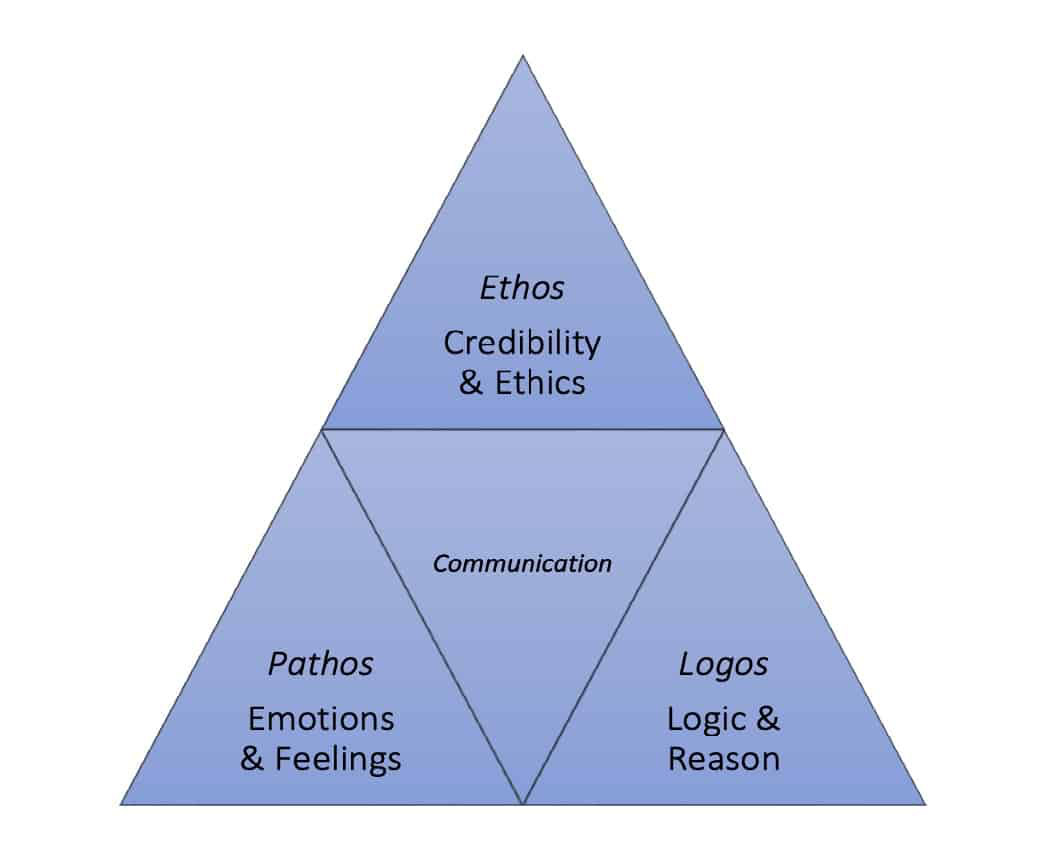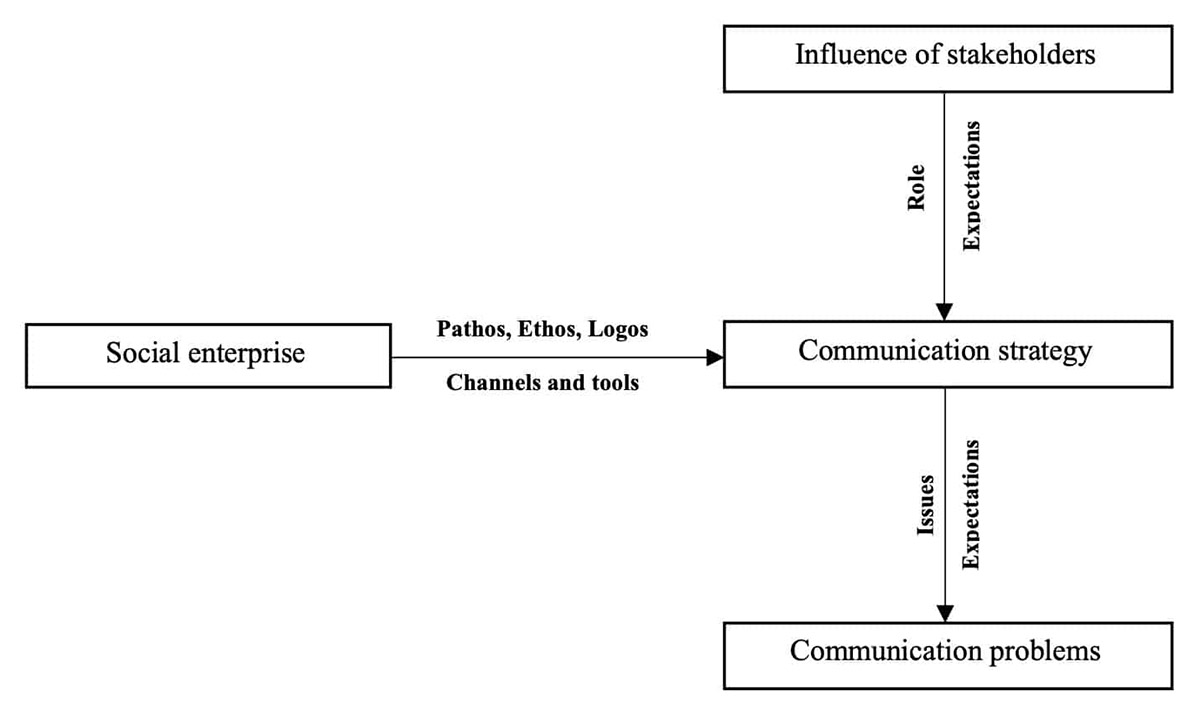How social enterprises measure and communicate their impact
Social enterprises are a new type of business that adds social value as well as economic performance. However, the social mission is the decisive reason for the existence of the enterprise. Linked to the social mission is also the social impact. But how exactly does this impact work, how can it be measured and how can it be communicated to the most important groups around a social enterprise?
I asked myself this question in my bachelor thesis on the topic “How do social enterprises signal their social impact to diverse audiences with different expectations”.
In order to understand how impact works and how measuring and especially communicating it works, I would like to briefly explain the most important terms around a social enterprise. Afterwards, the definition of the rhetorical triangle according to Aristotle helps to understand how and with what communication can be characterised. Finally, you will learn how social enterprises measure and communicate their impact with the help of some practical examples.
Social enterprise, social impact and social impact measurement
To be clear, it is not necessarily easy to define the terms
- social enterprise,
- social impact and
- social impact
to be understood correctly right away. This is partly due to the fact that current research does not yet provide a uniform definition of the terms. Nevertheless, the definition of the European Commission is the most conclusive for me. It defines social enterprises through the aforementioned social mission. Furthermore, social enterprises can be defined by three dimensions:
- The economic dimension states that social enterprises, in addition to the social mission, are dedicated to a continuous economic activity such as trading and producing goods or certain services, which distinguishes social enterprises from classic non-profit enterprises.
- The social dimension describes the goal of solving a social problem or a social need. In doing so, social enterprises usually serve a specific group of people or even the whole society.
- The controlling dimension includes regulations and other instruments to uphold the social mission.
Whether it is called social value, social return or even social impact, it is a phenomenon directly related to social enterprises. However, just like the term social enterprise, there is no single definition for the term social impact. However, it can be broadly defined as positive outcomes resulting from prosocial behaviour that benefit the targeted individuals of that behaviour and/or the wider community of individuals, organisations and the environment. Furthermore, social impact encompasses all changes that result from said prosocial behaviour, including intended, unintended, negative, positive, long-term, medium-term and short-term impacts.
In practice, social entrepreneurs are repeatedly confronted with the difficulty of measuring their impact and meeting the different expectations of various stakeholders. In addition to the financial aspects, the principles of transparency require continuous proof of social impact. Measuring it helps with this. However, there is ambiguity. Ambiguity regarding the characteristics of social impact as well as the methods for measuring it.
Social impact is characterised by a rather qualitative nature, which makes it difficult to measure, quantify and standardise it. An additional reason for this ambiguity is that, unlike the methods used to assess financial performance, there are no established methods for measuring social impact. Nevertheless, two common methods for assessing social impact are the “Balanced Scorecard”, which was developed as early as 1992, and the “Social Return on Investment”. Both are suitable for a wide range of users and combine social and market criteria.
Ethos, pathos and logos
Aristotle’s concept of rhetoric helps to understand the basics of communication. In this context, rhetoric can be defined as the ability to master the methods of persuasion and communication and implies to successfully convince, persuade and communicate.
Aristotle’s rhetorical triangle includes appeals to pathos, logos and ethos. Pathos, for example, ties in with the emotions and feelings of the individual. This includes
- passion,
- offence,
- empathy,
- fear,
- confusion and
- security,
- love,
- guilt,
- greed,
- compassion and
- humour.
It continues with ethos. With ethos, the communicator justifies activities by invoking socially established rules and practices. In addition, “moral legitimacy” is created through opinions about the nature and integrity of an activity. This includes the communicator’s credibility and trustworthiness.
Finally, logos is the appeal to reason and refers to the unambiguity as well as the coherence of what is to be communicated. Furthermore, logocentric appeals are characterised by the fact that they point to facts, evidence and empirical proof.
Communicating social impact in practice
In my research, I analysed the communication of social impact of four social enterprises from German-speaking countries and was able to conduct in-depth interviews with the managing partners. The social enterprises were a kindergarten provider, a food start-up, a corporate benefit start-up and a platform for digital education.
The classic stakeholders of the companies considered were customers, donors and, of course, the beneficiaries. The beneficiaries can be the customers themselves or a third group. Donors are usually large foundations, health insurance companies or private individuals. Classical financial investors made up none to a very small interest group.
The first important finding was that each of the four social enterprises had developed its own communication strategy designed for the different stakeholders. For example, the digital education company has developed an impact report for their donors and funders. This report is published annually and explains the impact and progress of the enterprise based on quantitative as well as qualitative data collected. In order to report on the positive social impact to the beneficiaries, in this case children and pupils, the company has created its own YouTube videos tailored to the pupils. Webinars and handouts were also developed to inform customers, in this case schools and teachers, about the impact of the programme.
The founder of the food start-up explained that it is important to understand the different interests of the buyers and to communicate the social impact in a very selected and understandable way, because customers and users hate confusion and prefer clarity. All social enterprises use different channels and tools to do this in the best possible way.
Overall, it is striking that all social enterprises examined pursue a personal, direct and transparent communication strategy with regard to social impact. The main focus was on the feeling of being part of the product, the performance or even the impact.
This leads on to the final point of my study: What is now most important in the communication of social impact.
Ethos, pathos or logos?
This too cannot be said definitively and across all companies, but in the case of the companies studied, pathos, i.e. communicating with and about feelings and emotions, played the most important role. This also has to do with the fact that the social impact of three of the companies is directly or indirectly connected with children or young adults. Both with this group as beneficiaries and with donors or customers, communication is primarily about emotions.
Nevertheless, ethos also has an important influence on signalling social impact. For example, it signals that the environment or sustainability are of shared importance and thus addresses the moral as well as ethical level.
Although current research says that communication dominated by pathos loses impact in the long run and only communication dominated by logos achieves impact in the long run, logic, data and facts are the least important in the case of the social enterprises studied. However, this does not mean that they are not used. Especially in impact reports as well as in measuring social impact, facts and figures play a major role. However, it seems that appeals to logos are rather slower to convince, as the addressed group has to read and evaluate the data first.
In summary, an open, transparent communication of the social impact, characterised by emotions and feelings, is most effective in the case of the companies studied. However, all three aspects are important and communication often combines all three. Finally, the following figure shows the model of social impact communication that I developed in the course of the study on the basis of the evaluated data and statements.
Notes:
If you like the post or want to discuss it, feel free to share it with your network.

Leopold Berg
Leopold Berg studies Business Administration & Economics with a focus on Management, Innovation and Marketing at the University of Passau. His bachelor thesis at the Chair of International Management and Social Entrepreneurship deals with the question of how social enterprises communicate their social impact to different stakeholders. He is currently in a gap year between his Bachelor’s and Master’s degrees and works in a consultancy.

